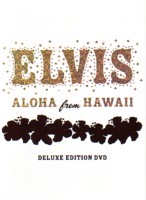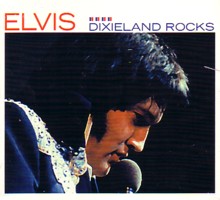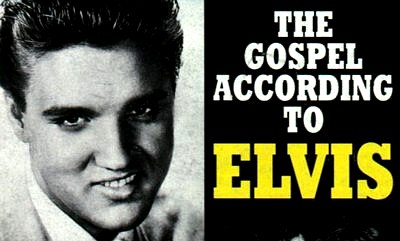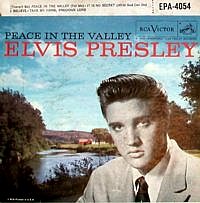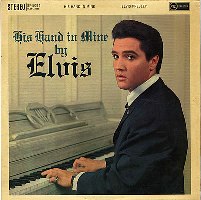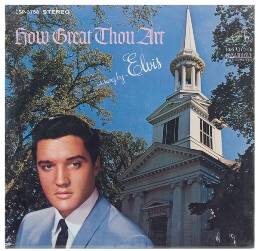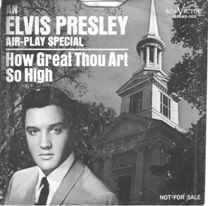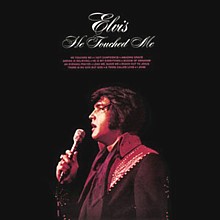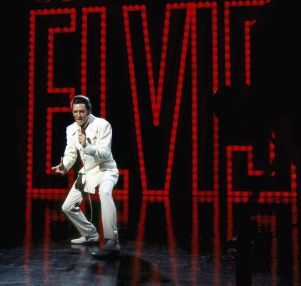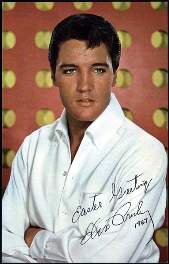 |
 |

More than any other musical genre, gospel played a consistently important role in Elvis Presley’s life, from his childhood to his final years on the road. Gospel music brought Elvis his only Grammy awards, and also became his consolation in times of stress or depression. He fused the rhythms, harmonies and texts of scared and inspirational songs with enormous skill and feeling and, and during the dark tears of the 60s, when his recording career came close to collapsing in a sea of trivia, his spiritual releases acted as a beacon of artistic quality. Elvis' love for gospel music began at an early age, when he attended the First Assembly of God Church in East Tupelo, Mississippi. After the Presley family moved to Memphis in 1948, Elvis made occasional visits to the black East Rigg Baptist Church and also attended gospel quartets at Ellis Auditorium by renowned white groups like the Blackwood Brothers and the Statesmen. Though gospel remained closest to his heart, it was rock 'n' roll which brought Elvis to stardom. But he never denied his roots, and as early as 1957, on his third appearance on the Ed Sullivan Show, he performed Peace In the Valley alongside his latest rock hits - neatly defusing the accusations that he was a threat to the morals of America's youth. When Elvis concluded his moving performance, Ed Sullivan told the audience that he was "a real decent, fine boy", and added "we've never had a pleasanter experience on our show with a big name than we've had with you, you're thoroughly alright". (This performance is documented on the 1984 box set, ‘A Golden Celebration’).
The four spiritual songs from the EP session were also included on ‘Elvis' Christmas Album’ at the end of 1957 - a surprisingly controversial release that was banned by many US radio stations, who felt Elvis wasn't treating sacred hymns with sufficient respect, but which still achieved double-platinum status.
Five months earlier, Elvis had performed one of the LP’s songs, Swing Down Sweet Chariot, at his benefit show for the USS Arizona Memorial in Hawaii – as documented on the ‘Elvis Aron Presley’ box set. Meanwhile, another song from the 1960 session, Crying In The Chapel, wasn’t included on the ‘His Hand In Mine’ album. In fact, it was held back by RCA until 1965, when it became his first No.1 single since the arrival of the Beatles.
Elvis’s original idea for the ‘How Great Thou Art’ album had been that it should be mixed and balanced to capture the way it would have sounded in church. But the result was that it was difficult to distinguish Elvis’s voice from the Jordanaires and the Imperials, so the mix on the final LP was changed without his permission to bring him to the fore.
Although Elvis didn’t undertake another major set of gospel recordings until 1971, he did cut the occasional spiritual song in the late 60’s. We Call On Him and You’ll Never Walk Alone were taped at the same 1967 sessions in Nashville which produced the hit single Guitar Man. They were coupled on a single in 1968, and also included on the UK budget LP, ‘You’ll Never Walk Alone’ in 1971.
A new version of Swing Down Sweet Chariot was cut the same year at 'The Trouble With Girls' session, again, with the Mello Men, but remained unreleased until 1983, when it appeared on volume four of the ‘Legendary Performer’ series. Then in 1969, Who Am I became the final track laid down at his highly productive Memphis sessions. The song received the same lush, pop production as the rest of the songs he cut at American Sound in Memphis; it wasn’t released until the posthumous ‘He Walks Beside Me’ LP in 1978.
He regularly included How Great Thou Art in his concerts, and won a third Grammy for the live recording made in 1974 at the Midsouth Coliseum, heard on the album ‘Elvis As Recorded Live On Stage in Memphis’. The LP also included a version of Kris Kristofferson’s Why Me Lord which had been a feature of Presley concerts since 1972. Although these were the only two gospel songs with a constant place in his live repertoire, Elvis did occasionally feature others: I John had been performed in Vegas as early as 1969; Crying In The Chapel was performed during his December 1975 Vegas season in a medley with (bizarrely) Rip It Up; and he sang Where No One Stands Alone at Johnson City during his early 1977 tour. God Calls Me Home and You Better Run also received occasional live outings. Those songs were never recorded, but there were more version of Why Me Lord and How Great Thou Art taped at concerts in Dallas and Jackson during the 1975 tour (on the ‘Elvis Aron Presley’ box set) and the astonishingly powerful How Great Thou Art from his final concert tour, recorded in Omaha in June 1977 for the CBS-TV special ‘Elvis In Concert’. That tour proved to be Elvis’s last, and he never had the chance to work on another gospel album after 1971. But he still left behind a fine legacy of spiritual music – plus the memory, in the mind of those who worked with him, of the countless impromptu gospel renditions he gave backstage or during rehearsals. Singing this music, whether it was with the Jordanaires, the Imperials, JD Sumner and the Stamps or the female trio, the Sweet Inspirations, have him the chance to shed off his everyday superstar identity, and lose himself in the purity of quartet singing. When we hear Elvis sing gospel, we can hear music that not only brought out the best of his unique voice, bit carried a spiritual message that was always close to his heart.
Spotlight by Nigel Goodall. The original version of this article appeared in the Record Collector: December 1994 Click here to comment on this article
|
|
